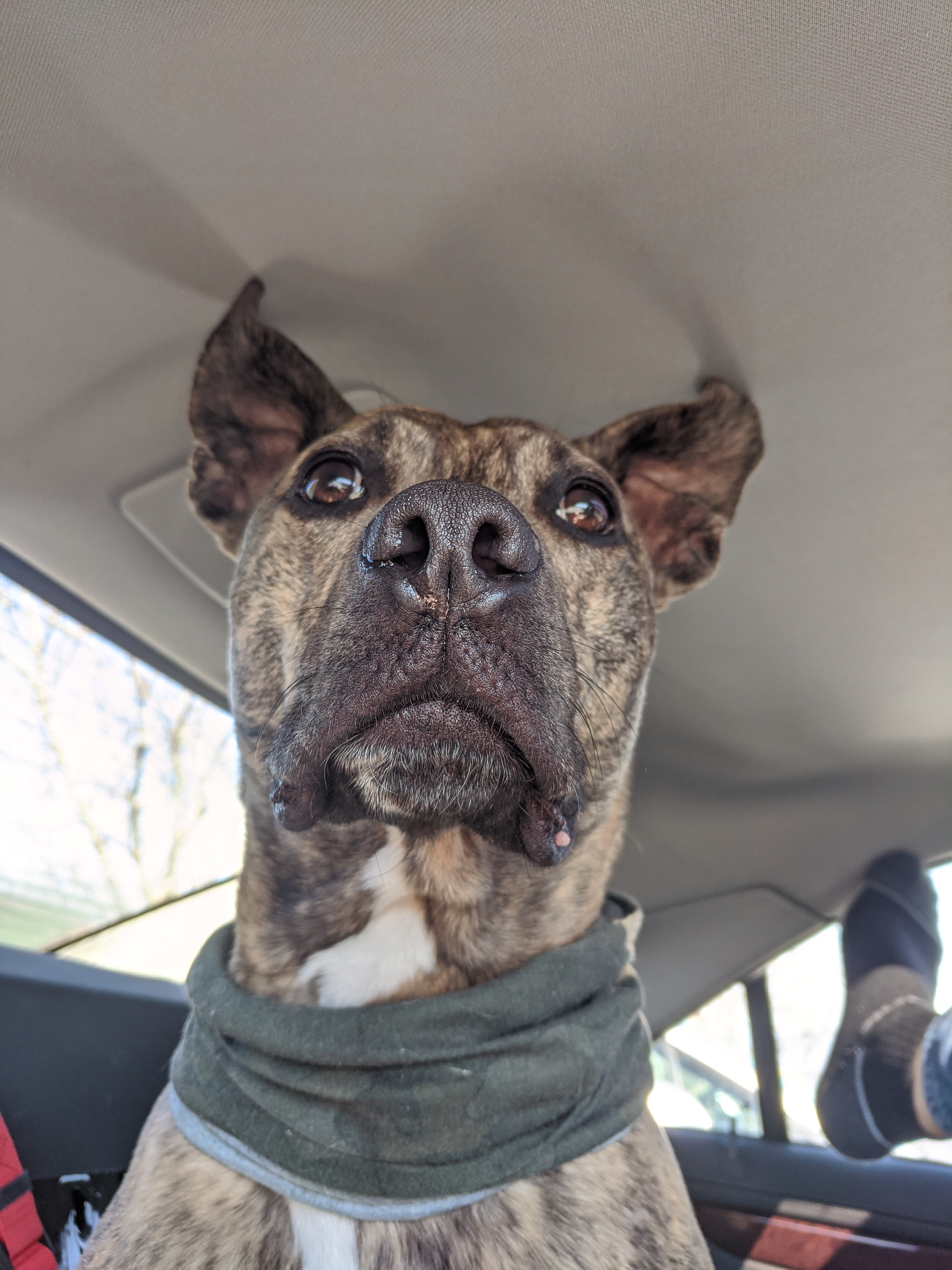I see this type of thing a lot. Both things can be true: not wanting a pet; and responsibly caring for a pet once the decision is made for you.
“I know I’ll be the one stuck with caring for it when the next interesting thing comes along.”
“We don’t have the budget right now.”
“I’ve buried dogs before and I don’t want to again.”
Oh hey a surprise puppy. Might as well make the best of it.
I think the last one is the primary reason most of the time, at least with people that end up like this. They know they love hard and they know it won’t last forever.
This was my dad with his cat. He loves his little Roni now and is teaching him tricks.

Dealing with this right now. Dog is super cute. It is still a terrible decision for my family, and that’s not the dog’s fault.
"Dads that didn’t want YOU to have a dog.
Dad’s who knew they’d be the one getting stuck with taking care of the dog.
What is the price difference between feeding a dog and feeding a cat?
southsamurai has a great overall explanation. I would add it also depends on the age and any medical conditions of each.
We have a 45 pound dog (age 12) and a 15 pound cat (age 17). The dog is on senior/old man food but is otherwise in good health. The cat has kidney disease so we have to get only specific kinds. Per month the cat’s food is about $5 more than the dog’s, but that’s for a smaller amount.
Depends on the size of the dog. Smaller dogs are comparable, bigger dogs much more expensive. Big dogs just need more food.
Haven’t seen prices recently because it’s been a while since my cat died, and it was years before my dog died after that (though I still miss them both way more than is fair), but the cost per ounce of food for each of them was roughly the same, a difference of pennies on any given brand, and it wasn’t always one that was the higher.
My dog was a corgi, about 28 lbs, my cat was something like 10 pounds (iirc, it has been a decade, and I’m not digging for her records just for this). At one point, they were both on the same brand of food, and the cost was comparable to their size difference. The dog was more expensive, but when you break it down per weight unit of food, it was negligible difference.
Just be aware that you can’t always get a direct equivalence. Using purina as an example name, you might have purina one for cats, but there’s three or four versions named different from the dog versions that are similar. I’m not saying that’s the case with that brand, just using it as an example for what I’m talking about. When there’s multiple varieties of a brand, figuring out which versions are the closest between cat and dog food isn’t always obvious.
If you don’t know how to calculate that, lemme know and I’ll type it out for you (no bullshit, not a snide thing, not everyone knows how, and it’s not a bad thing to not know).
Expect to pay more per year for a dog the size of a corgi compared to even big cats like a Maine coon. But the difference per pound of food is maybe 25 cents at the high end of difference, which is not much per ounce at all. If it’s a smaller dog like a chihuahua it might end up being less per year than the average cat.
I do remember a patient of mine that had great danes. Back in the nineties, for each dog, he was paying around 300 dollars a year, and he was using fairly cheap food, plus supplementing it with his homemade stuff. It would be something closer to 500 a year now, if I’m remembering the inflation correctly.
So did the 28 lb corgi eat 2.8 times the food of the cat?
It isn’t that direct a thing, but it was pretty close in their case.

album cover material, just a boss sitting on his throne






